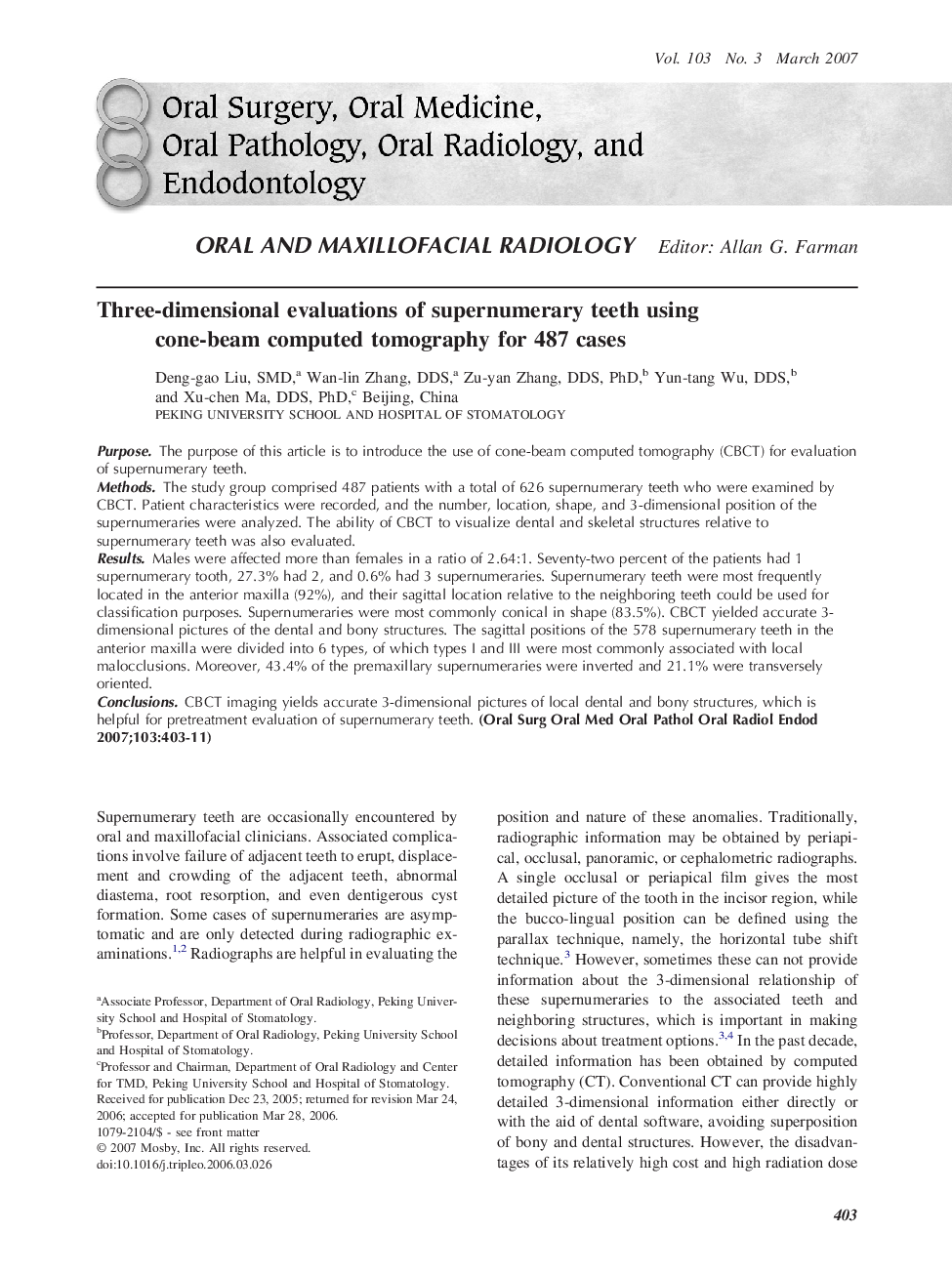| Article ID | Journal | Published Year | Pages | File Type |
|---|---|---|---|---|
| 3169538 | Oral Surgery, Oral Medicine, Oral Pathology, Oral Radiology, and Endodontology | 2007 | 9 Pages |
PurposeThe purpose of this article is to introduce the use of cone-beam computed tomography (CBCT) for evaluation of supernumerary teeth.MethodsThe study group comprised 487 patients with a total of 626 supernumerary teeth who were examined by CBCT. Patient characteristics were recorded, and the number, location, shape, and 3-dimensional position of the supernumeraries were analyzed. The ability of CBCT to visualize dental and skeletal structures relative to supernumerary teeth was also evaluated.ResultsMales were affected more than females in a ratio of 2.64:1. Seventy-two percent of the patients had 1 supernumerary tooth, 27.3% had 2, and 0.6% had 3 supernumeraries. Supernumerary teeth were most frequently located in the anterior maxilla (92%), and their sagittal location relative to the neighboring teeth could be used for classification purposes. Supernumeraries were most commonly conical in shape (83.5%). CBCT yielded accurate 3-dimensional pictures of the dental and bony structures. The sagittal positions of the 578 supernumerary teeth in the anterior maxilla were divided into 6 types, of which types I and III were most commonly associated with local malocclusions. Moreover, 43.4% of the premaxillary supernumeraries were inverted and 21.1% were transversely oriented.ConclusionsCBCT imaging yields accurate 3-dimensional pictures of local dental and bony structures, which is helpful for pretreatment evaluation of supernumerary teeth.
